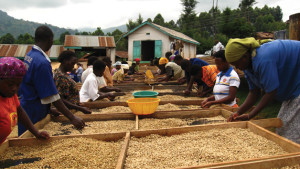
Agricultural markets and trade are key growth areas in Africa
Africa’s agriculture sector can emerge as the food provider to the world by implementing better policies…
After years of neglect, Africa’s agriculture sector is finally being recognised as a powerful driver of the continents growing economy. Agriculture and the business of buying and selling agricultural produce grown in Africa now accounts for nearly half the continent’s economic activity. Today, Africa’s agriculture and food market is worth $310 billion and has the potential to grow to $1 trillion by 2030.
An efficient and developed agriculture sector in African countries could increase incomes, boost jobs and reduce hunger and environmental degradation while building shared prosperity. “Today, Brazil, Indonesia and Thailand export more food product that or the whole of sub-saharan African countries combined,” observes Jamal Saghir, director of Sustainable Development Department of the World Bank. “It’s time to change this,” he says.
Despite being home to half the world’s fertile, uncultivated land and abundant water resources, African farmers get the smallest amount of produce from their crops globally. In fact, Africans import half the rice they eat and pay top dollar for it – as mach as $3.5 billion per year.
At the country level businesses are unable to maximise their potential because of erratic border policies, poor infrastructure and poorly functioning input markets including for seeds and fertilizers. Lack of access to capital is also a hindrance. For instance, while Senegal is competitive among its neighbours it is held back by the difficulty farmers have accessing land, capital finance for irrigation expansion and appropriate crop varieties.
Further East, Ghana produces fewer types of rice than Senegal but at a significantly higher cost. The country also imports rice but levies 40 per cent tariffs and other charges pushing up the price for consumers.

Maize or corn is a food staple for many Africans. Zambia is competitive when importing maize – it levies fewer tariffs but fails on exports
Poor grain quality, lack of cleanliness and packaging facilities are major deterrents for consumers constraining the sector’s performance.
“You still see great challenges in the business – ranging from poor infrastructure and high cost of agriculture,” says Captain James Karanja, general manager of Freshco Seeds, Kenya.
Maize or corn is a food staple for many Africans. Zambia is competitive when importing maize – it levies fewer tariffs but fails on exports. Compared to Thailand, a major producer of rain-fed maize, it costs Zambia three times more to produce the grain because of high transport costs, higher labour costs and lower yields.
“If you see an example Kenya, which has been a major exporter of fresh agricultural produce to the EU for many years. However, this is not happening now because of the stringent conditions that have been put in place by the EU,” says Captain James Karanja of Freshco Seeds.
Cocoa is another example. It is sub-saharan Africa’s most important export crop. Sub-Saharan African cocoa production is valued at $4 billion per year. Ghana, Africa’s largest cocoa producer has upgraded technology and management but yield levels are still low because of aging farmers and aging trees.
Ghana needs a substantial boost investment to upgrade plantations and make growing cocoa a profitable venture. The result to these challenges to African food production and trade is more imports and rising food prices coupled with the rising threat of climate change. “African farmers and businesses must be empowered through good policies, increased public and private investment and strong public-private partnerships,” says Gaiv M. Tata, director of Financial and Private Sector Development at the World Bank.
Africa is at a crossroads – a dynamic private food industry can work side by side with government to link farmers to consumers in an increasingly urbanized continent. By investing in the agribusiness sector African countries can tap into regional and global food markets, make more food available locally and boost exports worldwide.















